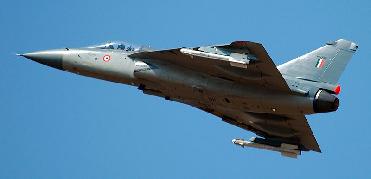An artist's impression of the starspots using a solar image. -- Image credit: U. Wolter, SOHO/MDI, ESA/NASA
HAMBURG (BNS): A team of astronomers from Germany�s Hamburg and Tautenburg Universities has carried out detailed study of the surface of a star situated 300 lightyears away from Earth and found dark spots similar to the blemishes appearing on our Sun.
Using French-German space telescope CoRoT, the scientists have obtained high resolution images of the spot in the star � CoRoT-2a � situated in the constellation of Aquila. The star is being orbited by a planet.
The study results have been published in the journal of Astronomy and Astrophysics.
�Our observation method is new�, explains lead author Uwe Wolter of the Hamburger Sternwarte, an institute of the University of Hamburg. �To study the stellar surface, we make use of the fact that the star is regularly occulted by its own planet.�
As seen from Earth, the planet passes in front of its host star about every other day. While doing so, it blocks some of the light emanating from the star, thereby making it appear slightly fainter. The resulting brightness difference amounts to a few percent, the study said.
The astronomers have closely observed the light missing due to the planet�s occultation with a much higher precision than offered by terrestrial observations. Since the orbital parameters of the planet CoRoT-2b are known precisely, the portion of the stellar surface occulted by the planet at a given time is also well known.
This has enabled to study the star�s surface structure with a precision that was so far out of reach for even the largest ground-based telescopes using direct imaging. In this way, the planet serves as a kind of magnifying glass that repeatedly scans sections of the stellar surface.
Concerning its size and spots, CoRoT-2a to some degree resembles our Sun. However, with its estimated age being a few hundred million years, it is relatively young. At this age presumably not even primitive organisms could evolve on a planet. Besides, the planet CoRoT-2b is also very close to its host star, less than ten times the distance between Earth and Sun. The resulting very high temperatures make any presently conceivable lifeforms impossible on the planetary surface, the scientists found.
 Previous Article
Previous Article Next Article
Next Article













The Indian Air Force, in its flight trials evaluation report submitted before the Defence Ministry l..
view articleAn insight into the Medium Multi-Role Combat Aircraft competition...
view articleSky enthusiasts can now spot the International Space Station (ISS) commanded by Indian-American astr..
view article